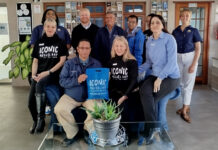Just four Christmas’s ago, the Mother City was as dry as frequently sanitised hands. “Day Zero” was looming as dams sat empty at about 30%.
We’re in the first week if January 2022 and we already have something huge to appreciate. According to Cape Town’s weekly water dashboard, dams are currently 93.9%. A joy to see, especially after the busy festive season.
According to the city’s MMC for Water and Sanitation, Zahid Badroodien, the healthy dam levels and steady water usage can be attributed to fewer visitors in Cape Town than there have been in previous years (due to the COVID-19 pandemic and travel restrictions), reports Daily Maverick.
However, water remains a resource to be treasured (and used sparingly). What goes in is clearly coming out with daily water use reported at 814 million litres a day. 93.9% is already a 1.3% decrease from the week before.
Appreciate, don’t celebrate:
It’s been a hot summer in the Western Cape and it’s only natural that dam levels will continue to decrease until the rainy season returns in winter.
The City of Cape Town’s water dashboard supports this, stating that water storage levels are expected to decrease in the months leading up to winter.
Dam water capacity is predicted to drop to just below 70% (a level marked as the “danger zone”) if water continues to be used at the current rate of 814 million litres a day.
Five water wasters in your home:
To play your part in keeping Cape Town as far away from “Day Zero” as possible, consider making small changes at home to save water.
According to FLO, there are the five biggest water wasters in the average household:
1. Toilet
Old toilets use over 11 litres per flush and people can flush up to eight times per day. Low-flow toilets use about six litres per flush. According to SAJB, a leaking toilet can waste up to 56 000 litres of water per month.
2. Shower
A ten-minute shower will run about 76 litres, and that’s on the low end. Consider installing a low-flow shower head and/or taking quicker showers.
3. Faucets (taps)
The average person loses 98 litres per day from running their faucets. Be mindful to turn off the faucet when you’re not using it. For example, when brushing your teeth, turn the tap off while you brush!
A dripping tap that runs at a rate of one drip per second wastes up to 12 000 litres a year. That is enough water to fill 63 bathtubs to the top, adds SAJB.
Another important note: COVID-19 and washing your hands. Whilst washing your hands for the recommended 20 seconds, turn the tap off, and then on again to rinse.
4. Washing Machine
If you utilise a washing machine, make sure that it is full before starting the load. Don’t use your machine to wash one sock. A washing machine can use up to 114 litres per cycle.
5. Leaks
Most residents aren’t aware they have leaks but lose 14% of their water to them. Install a plumbing maintenance and leak detection system to eliminate this unnecessary source of water loss.















